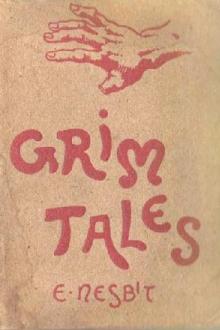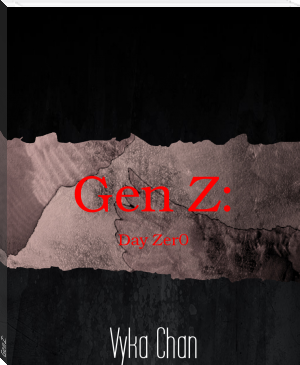Callisto 2.0 by Susan English (love story novels in english txt) 📖

- Author: Susan English
- Performer: -
Book online «Callisto 2.0 by Susan English (love story novels in english txt) 📖». Author Susan English
“Oxygen tanks are in the packs, good for about four hours.” She held out a tube attached to the backpack for me to see, then pointed to a coupler on one of the helmets.
“Just snap the end of the tube to the coupling on the helmet here. Let’s hope we never need to use them, but it’s always better to be prepared.”
“That’s for sure, especially in space,” I agreed.
She pushed a button on the inner door of the cabinet, and an alarm sounded, the volume thankfully low. “If you ever hear this, it means there’s been a hull breach.”
I nodded solemnly, and she closed and latched the cabinet door.
“How many people work here?” I asked as we entered the hub. It was bigger than I expected, and decorated with a multicolored mosaic on the inner surface made of the same soft cloth used on the walls of the corridors, an explosion of color and symmetry.
A network of padded handrails, resembling a three-dimensional spider web, allowed us to navigate easily through the open space, using the rails to guide our motion. We stopped in the center.
“Let’s see, there’s a team of four women who are in charge of the station operations, three engineers.” She paused for a moment, index finger resting on her lips, then said,
“To be fair, the women in ops are all engineers, too. We also have a doctor, an anthropologist, and eight scientists, including myself. And if you agree to work with us, we will be nine.” She honored me with her brilliant smile.
The blood rushed to my cheeks, and I looked away quickly, focusing on my surroundings. Six passages opened into the hub, each a different color.
37
“Each corridor goes to a different module,” said Diana, “all color-coded, as you can see. Come on, let’s visit the physics lab.”
We headed down one of the corridors, this one a pleasing lavender, and once we entered the module Diana opened the door to a lab. A tall, slim woman was leaning over what appeared to be an interferometer.
“Hadley, this is Calli,” she said as we pushed our way through the doorway.
Hadley looked up at us with a smile. Her blond hair was cut short, accentuating her thin face and high cheekbones. “Welcome, Calli, I’m just running an experiment, a precursor to what I hope will be a miniature warp bubble.”
I propelled myself over to her, peering at the apparatus. “No way!” My eyes grew wide. “I know the theory. I’ve been studying the work of Miguel Alcubierre and his successors my entire academic career, even did my postdoc in Mexico City at the Alcubierre Center for Space Technology.” I paused to catch my breath, then continued.
“I haven’t heard of anyone who is at the experimental stage. As far as I know, the last experiments were eighty years ago, with the warp-field interferometer, using high-voltage barium-titanate ceramic capacitors.”
“Uh-huh. I recreated their experiment, but here,” she indicated a donut-shaped object along one arm of the interferometer, “I’m using a novel ceramic designed by our materials science team. The trick with the warp bubble is in the production and containment of the required negative energy.” She pointed to another apparatus on an adjacent table. “That’s my experimental setup for that particular mystery.”
“If you can solve that one, it would be a game changer.”
“My results are very promising,” said Hadley, her steel-blue eyes dancing.
I stared at her, my mind reeling. If Hadley had plausible ideas on the generation and containment of negative energy, that would be a true breakthrough. My heart was racing.
“You two will have a chance to chat later,” Diana said. “But first, I want to show Calli the rest of the station.”
“Perfect. I look forward to talking to you more, Calli.”
“Me too!”
When we left the lab, I couldn’t contain my excitement. I stopped outside the door in the hallway, grabbing the railing, and Diana turned to face me. “What Hadley’s doing, it’s cutting-edge research! I had no idea anyone was at such an advanced experimental stage with ftl technology. Although what she—I mean—what we are working on isn’t technically faster than light, it’s a local expansion of spacetime behind the spacecraft and an opposite contraction in front of it, so that it appears to outside observers that the craft is moving faster than the speed of light. Anyone inside the warp bubble would essentially be at rest. A smooth ride! And no violation of Einstein’s special relativity—
no faster-than-light travel—just a distortion of spacetime. The prospects are staggering.
The distances we could travel are beyond astronomical. All in the blink of an eye, too!”
“I’m glad you’re so enthusiastic.” That smile again. My stomach fluttered. “Let me 38
show you the park.” She led the way back to the main hallway, this time turning right, away from the corridor and hub, and toward the center of the module. The hallway opened into a beautiful garden, full of flowers and greenery, with benches scattered here and there, bolted to the inner surface. The air was clean and redolent with a sweet fragrance, thanks to the many flowers in bloom.
“Wow!”
Diana beamed. “Remember I mentioned to you I believe people are more productive when they’re surrounded by the beauty of nature? We wanted to bring that to Shambhala. There’s also a park in the ops module, just like this one.”
“Amazing,” I whispered.
“Come on,” she said, grinning at my expression of pure wonder, “we still have more to see.”
Diana showed me the dining room and observation deck, and next, we visited station operations. Then we took the emerald-green corridor to the garden, or the “farm,” as Diana called it. This module was filled with floor-to-ceiling racks of vegetation, similar to the arrangement on the lunar colony.
We each hooked one foot under a bar running along the length of the outer wall to keep from floating away.
“These cultivars are perfectly adapted to microgravity,” Diana said.
“Are they genetically modified?”
Just then, a woman poked her head from behind a wall of foliage. “No, not here.
There are plenty of plant species specifically created for micro-g, but after everything that happened with the genetically modified food crops back in the mid-2000s, we decided to go the old-fashioned route—selective breeding, like our ancestors did twenty-four thousand years ago.” She removed her glove and reached out her hand.
“Hi, I’m Zoe.” Her hand engulfed mine as she squeezed softly, her warmth spreading through my fingers. Her expression was open and friendly, her blue eyes framed by thin, arched eyebrows.
I looked around at the tangle of greenery and considered Zoe’s remark about the GMOs. What a tragedy that had been! I didn’t know the whole history—it had reached a crisis point about twenty-five years before I was born—but, judging from the aftermath, it was one of the biggest ecological disasters of the century, rivaling global climate change in terms of its catastrophic environmental impact. So much of the natural environment destroyed, mostly in North America and the sub-Saharan African continent.
That was when California seceded from what was then the United States to become its own country. Later, many other states and regions followed California’s example.
The middle of the continent had been almost entirely wiped out—the people, the fauna, the ecology, everything.
It took years to repair the damage, and still much of the land was barren. It wasn’t the genetic modification itself that had caused all the problems, it was the company that 39
owned the genes, and their pesticide monopoly. All for profit. Pure, unadulterated greed. And living creatures paid the price, not only humans, but so many animals, and the environmental destruction was shocking.
That disaster had come right at the end of many years of devastating global viral pandemics, starting in 2020 with the SARS-CoV-2 virus. That virus was a walk in the park compared to what came after. In only twenty-five years, over half the world population had died off, and since then, human fertility rates had plummeted. The pandemics, along with decades of rising global temperatures thanks to unchecked greenhouse gas emissions, had brought the human race nearly to the brink of extinction.
It was a bleak time for science, a bleak time for the planet.
Within five years of the disaster, the World Government had been created, spearheaded by the newly formed southern African nation state Amandla Wobumbano, which included Zimbabwe, Mozambique, Namibia, Botswana, and South Africa. In addition to overseeing environmental protection protocols, the Amandla Wobumbano governing body guaranteed that every adult on the planet received a minimum wage and basic healthcare. Not a single country refused to join the World Government initiative, perhaps the first and only time in human history when the whole world was in agreement. Each country was an autonomous entity, with its own languages, customs, and local laws, but all agreed to obey the World Government mandates, and the World Court was the highest tribunal of the Earth.
I mentally shook my head, coming back to the present.
“Let’s head back over to the lab module,” Diana was saying.
“Nice to meet you, Zoe,” I said.
“Likewise, Calli.”
As we floated down the corridor, Diana said, “Each module has an array of photovoltaic cells, as you might have noticed when we approached the station. Solar power is our primary energy source, but we also use fusion. I’d say about ten percent of our power usage comes from the fusion reactors, even though the photovoltaics produce more than enough energy for our needs. We’ve stockpiled helium-3 for our
 If you are looking for a good book horror, you should visit our website. Electronic library is gaining popularity. Influenced by modern technology and the advent of new gadgets, people are increasingly turning to electronic libraries because it allows them to read online everywhere . Every reader thanks to his smartphone, laptop or computer, can visit our website at any time. Reading ebooks help people to make good use of free time. Our elibrary has a huge selection of genres for every taste and request.
If you are looking for a good book horror, you should visit our website. Electronic library is gaining popularity. Influenced by modern technology and the advent of new gadgets, people are increasingly turning to electronic libraries because it allows them to read online everywhere . Every reader thanks to his smartphone, laptop or computer, can visit our website at any time. Reading ebooks help people to make good use of free time. Our elibrary has a huge selection of genres for every taste and request.




Comments (0)